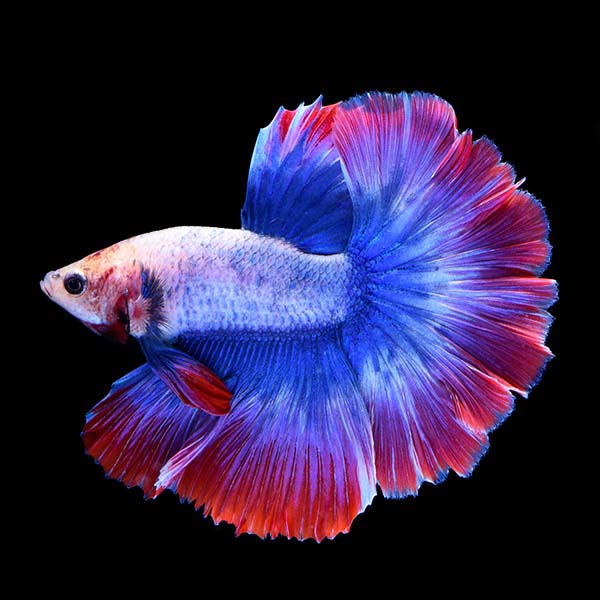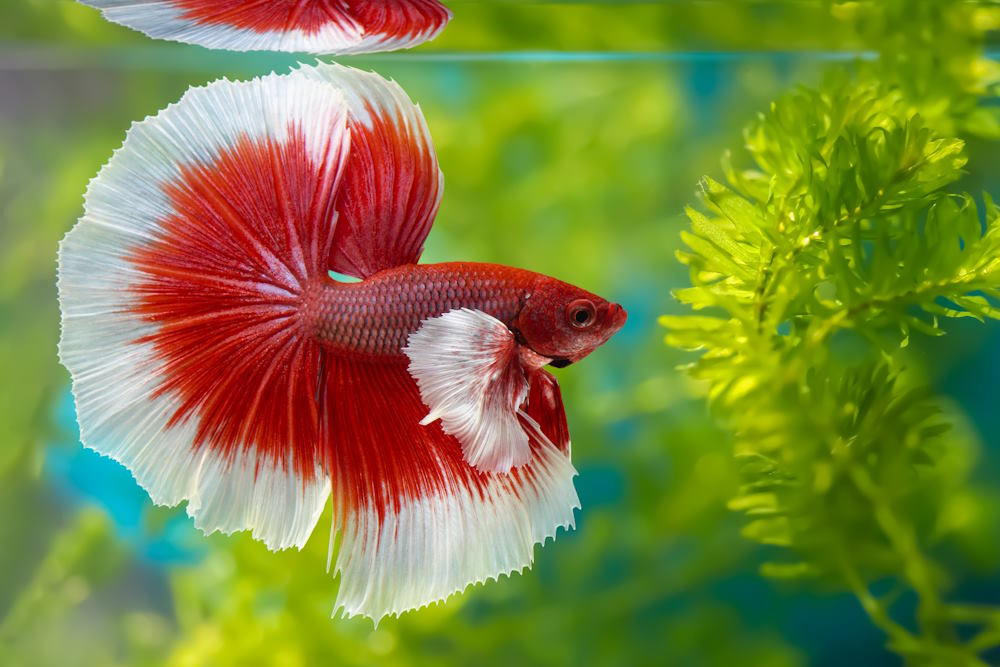Betta Fish Tank Configuration: A Step-by-Step Overview for Beginners
Betta Fish Tank Configuration: A Step-by-Step Overview for Beginners
Blog Article
Reproducing Betta Fish: a Comprehensive Step-By-Step Guide to Successfully Raising Infant Bettas From Eggs to The Adult Years
Reproducing Betta fish is a thorough endeavor that calls for cautious preparation and implementation to guarantee the effective growth of fry from eggs to mature fish. As the male Betta carefully constructs a bubble nest and guards the priceless eggs, the succeeding stages of care and change need attention to detail and understanding of best methods.

Picking Breeding Pairs
When beginning on the journey of breeding Betta fish, choosing the best reproduction pairs is important to achieving preferable qualities and a healthy family tree - betta fish. The initial step in this procedure is to determine the specific attributes you want to enhance or maintain, such as shade, fin type, and physique. It is crucial to select genetically varied sets to avoid inbreeding, which can bring about health and wellness concerns and unfavorable features
Assess possible breeding prospects thoroughly. A healthy and balanced male Betta ought to show dynamic shades, an active temperament, and well-formed fins, while the woman needs to also present vibrant pigmentation and a rounded belly, suggesting readiness for spawning. Observing the character of both fish is vital, as hostile or overly timid people may not reproduce successfully.
Maintaining records of the parent fish's origins can aid you track genetic attributes and potential problems. Eventually, investing time in the option procedure will considerably improve the chance of producing strong, lively spawn that fulfill your breeding goals.

Preparing the Reproduction Container
Developing an ideal breeding atmosphere is a key action after picking ideal pairs for Betta fish. The breeding container ought to be specifically created to supply comfort and promote the natural reproduction behaviors of the fish. Beginning with a storage tank dimension of a minimum of 10 gallons to ensure ample space for both the man and female Bettas.
Keep a gentle purification system to keep the water tidy while avoiding strong currents that can emphasize the fish. Furthermore, an air rock can be included in offer oxygenation without interfering with the water surface also much.
Temperature level regulation is crucial; go for a secure series of 78-82 ° F(25-28 ° C) utilizing a reputable heater. The pH level need to be preserved in between 6.5 and 7.5, and regular water modifications are necessary to make sure high water quality.
Include floating plants or generating sponges to create hiding places for the female, while also motivating bubble nest building by the male - betta fish. Ultimately, make sure the tank is devoid of sharp decorations and any kind of prospective threats, as the welfare of the fish must constantly be prioritized throughout this important phase of reproduction.
The Reproduction Process
Normally, the reproducing process for Betta fish entails a series of unique and evident actions that suggest preparedness for recreation. The male Betta starts by developing a bubble nest at the water's surface area, which acts as a site for the fertilized eggs. This nest is vital, as it gives a safe atmosphere for the eggs till they hatch out.
As soon as the nest is established, the male will display courtship habits, such as flaring his fins and displaying lively shades to bring in the woman. The lady, upon picking up the man's readiness, will respond by presenting upright stripes along her body, indicating her receptiveness.
The fed eggs after that drop to the bubble nest, where the male thoroughly collects and returns them to the nest. Following this, the male presumes responsibility for securing the nest and guaranteeing the safety of the eggs up read this post here until they hatch, normally within 24-36 hours.
Caring for Betta Fry
Caring for Betta fry needs careful focus to their environment and nourishment to guarantee healthy and balanced growth and growth. After hatching, Betta fry are exceptionally little and susceptible, demanding a steady and tidy habitat. Keeping a water temperature in between 78 ° F and 80 ° F is vital, as Betta fry flourish in cozy conditions. Furthermore, ensure that the water is cost-free of hazardous contaminants; normal water changes of 10-20% are recommended to keep optimum water high quality.
Feeding Betta fry is equally crucial. They should be used infusoria or carefully smashed top quality fry food, as their mouths are as well tiny to deal with larger fragments. As they grow, you can gradually present bigger foods, such as baby salt water shrimp or powdered flakes, to ensure they get appropriate nourishment. Feed them percentages numerous times a day, being careful not to overfeed, which can result in water high quality concerns.
Transitioning to Adult Bettas
As Betta fry mature, transitioning them to grown-up Bettas is a crucial phase that calls for mindful administration of their atmosphere and social interactions. This procedure typically starts when the fry get to around six weeks old, at which factor they can be slowly introduced to an extra organized living atmosphere.
To promote this shift, it is necessary to ensure that the water specifications-- such as temperature, pH, and ammonia degrees-- are optimal and steady. Adult Betta fish prosper in warm water (around 78-80 ° F) with a pH of 6.5 to 7.5. Progressively accustom the fry to these problems to lessen stress.
Social interactions are one more key aspect; male Bettas are notoriously territorial and hostile. It is recommended to different males right into individual containers as they mature. Women Bettas can be housed together, yet treatment ought to be required site web to monitor for indications of aggression.
Furthermore, nutritional adjustments must be made as the fry expand. Integrate top quality pellets and live foods to support their growth and health. By taking care of these elements effectively, you can advertise an effective transition to their adult years for your Betta fish.

Conclusion
Effective breeding of like it Betta fish needs mindful attention to detail throughout the whole procedure, from picking genetically varied pairs to offering ideal take care of fry. By making sure ideal breeding conditions and maintaining water top quality, the likelihood of healthy and balanced offspring boosts substantially. In addition, a balanced diet plan and gradual adaptation to adult atmospheres are crucial for the growth and advancement of Betta fish. Adhering to these steps faithfully cultivates a growing population of Betta fish, boosting both their health and wellness and vitality.
Report this page